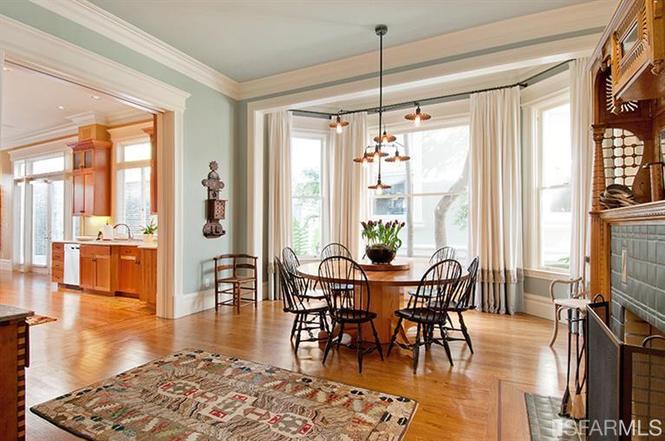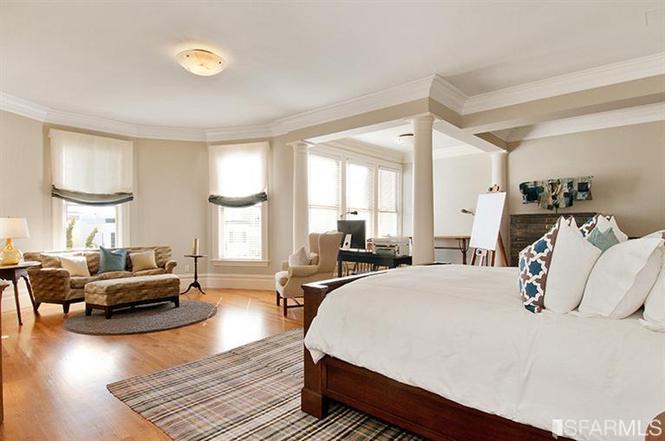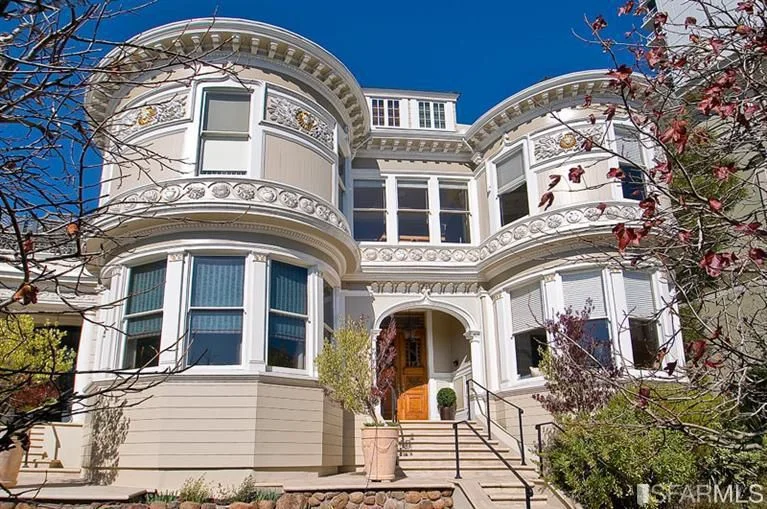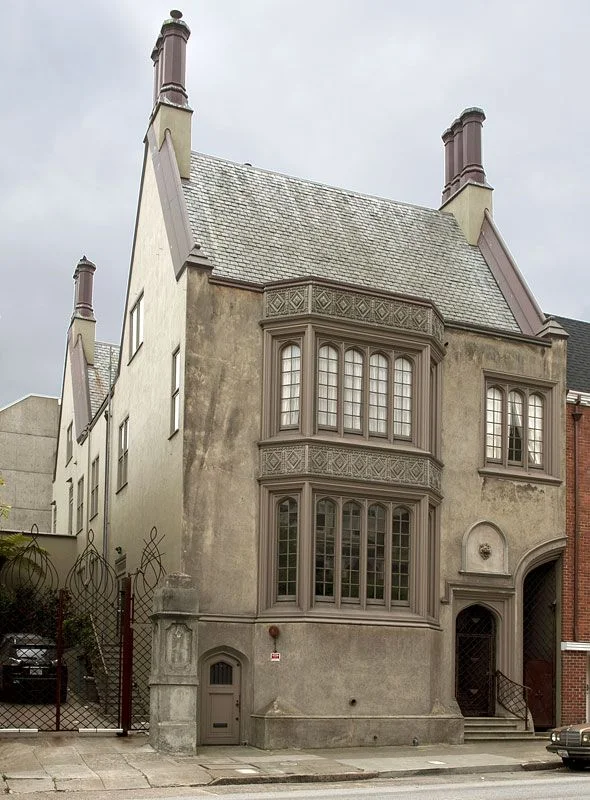Landmark #119 and the Murder Mystery??
/If you set out to unravel the facts behind one of San Francisco’s most gruesome murders, you’ll find yourself with a handful of details most likely culled from old ghost stories.
The tale always begins with Richard Craig Chambers, a silver baron from the Midwest. With his wealth, he moved to San Francisco and built the palatial home at 2220 Sacramento Street. Richard and his wife moved in in 1887. When Richard died in 1901, a few years after his wife, two of his nieces inherited the home.
It was an unhappy arrangement. The nieces did not get along. In some variations of the story, one niece built the house next door to get away from the other, Claudia Chambers. It is Claudia who meets the most unfortunate end — and under murky circumstances. Most sources say she died in a “farm implementation accident.” Many agree she was sawed clean in half. A few say it was no accident, that a deranged family member faked the accident in order to murder Claudia.
Regardless of the circumstances, the Chambers mansion became synonymous with ghost stories. Ghost tours today still stop outside the home, warning curious looky-loos of Claudia’s spirit, which manifests itself in the form of flashing lights and shadows in the windows.
But the historical record says something else altogether: that almost none of this happened at all.
The truth behind the Chambers mansion
The first mistake becomes apparent immediately. There is no Richard Craig Chambers, the name universally attached to the historic San Francisco home. His name was Robert, as dozens of newspaper articles and census records attest. Some accounts also claim he was a U.S. Senator; Chambers never served in the Senate, although he was the Plumas County sheriff from 1858-62.
He made his fortune as the superintendent of the Ontario silver mine near Park City, Utah. He eventually sold the mine to George Hearst, father of the newspaper magnate; by the time the mine tapered off, it had yielded $50 million in silver and lead.
Robert and his wife Eudora were well-known fixtures in San Francisco society but, for reasons lost to time, the pair never had children. Sometime before Eudora’s death in 1897, they took in two of Eudora’s nieces, Lillian and Harriet. If your interest is piqued by the mention of two nieces, they’ll become pertinent later on.
Robert died of appendicitis, just short of 70, on April 11, 1901. The Chambers estate, valued at $1.5 million at the time, was split between Robert’s brothers and sisters. The house went to his sister Ada Chambers Martin, who appears to have lived in it with her husband until their deaths in the early 1910s. After that, the home passed to another Chambers sibling, Margaret.
Those are the facts, backed up by newspaper accounts and property records. A further dive into census records and city directories turns up no trace of anyone named Claudia Chambers which, at least, should reassure anyone worried she was sawed in half.
A good ghost story, though, has some threads of truth, used to weave together the tale. And it seems Claudia’s haunted soul does have a model in reality: Eudora Chambers.
The history of Eudora Chambers
We know little about Robert’s wife Eudora, save for a few sad episodes recounted in the San Francisco Call. In May 1893, Eudora went missing from 2220 Sacramento St. Her friends and family searched for her, but the 40-year-old had vanished without a trace. A week later, a man found her wandering the beach near Mussel Rock, “very weak and helpless.” Although she’d been missing for seven days, the family doctor said she showed no signs of exposure. The doctor speculated she’d been taken in at some point during her lost days.
Eudora went missing from 2220 Sacramento St. Her friends and family searched for her, but the 40-year-old had vanished without a trace. A week later, a man found her wandering the beach near Mussel Rock, “very weak and helpless.”
Her strange behavior comes tragically into focus seven months later when the Call ran an article with the headline, “Mrs. R.C. Chambers Tries to Commit Suicide.” On New Year’s Eve, a train engineer near Valencia Street noticed a woman walking perilously close to the tracks. As the train approached, he saw her throw herself in its path. Remarkably, she was thrown clear of the tracks, suffering non-fatal injuries to her head and hip.
“From persons who are acquainted with the family it is learned that Mrs. Chambers is thought to be slightly unbalanced mentally,” the paper callously reported.
Three years later, Eudora was dead. Her cause of death is not known.
Then there is the matter of Eudora’s nieces, Lillian and Harriet. There was indeed conflict with the nieces but not between each other. After Robert’s death, Lillian and Harriet filed suit against his family, alleging they deserved a cut of the estate. According to the lawsuit, Lillian and Harriet were taken in by the Chambers after their own parents died and had been raised "like [their] children." On the condition Robert’s will would provide for them after his death, the sisters handed over their tract of land in Butte County.
After Robert’s death, Lillian and Harriet filed suit against his family, alleging they deserved a cut of the estate.
Because they "were treated with such kindness after the marriage and after the death of Mrs. Chambers ... they had no hesitancy in complying with Chambers’ request they deed the property to him," the Chronicle reported.
Upon his death, however, Lillian and Harriet learned there was no such provision. They sued the Chambers, hoping for at least the land in return, but after some years and several appeals, the nieces lost their case.
They never again lived in the house on Sacramento Street.
Last Sold November 8, 2013 for $4,085,000 by our very own Joseph Lucier.
The Chambers mansion, today
As for the mansion, it’s had a few incarnations since housing the Chambers family. In the late 1970s, it was turned into a 15-room luxury bed-and-breakfast. Among its many celebrity guests were Robin Williams, Barbra Streisand and John F. Kennedy Jr. At night, the Mansion Hotel hosted magic shows (flashes of light in the windows, anyone?) and private concerts (once, Liberace performed).
In 2000, the Mansion Hotel was sold to a private developer and turned into two townhouses. The real estate site Zillow estimates they're worth about $6 million each. Today, the mansion is nearly hidden from the street by bushes and trees, easily missed by anyone walking to or from Lafayette Park.
For those hoping to find answers beyond the grave, there's one last footnote: There is no grave. An obituary indicates Robert was buried at Laurel Hill Cemetery, a defunct graveyard that was moved to Colma in the 1930s. At that time, the graves were dug up en masse, although occasionally forgotten coffins are found during present-day renovation projects.
Eudora Chambers' final resting place is a mystery.
Credit: Katie Dowd, SFGATE Monday, October 22, 2018
































